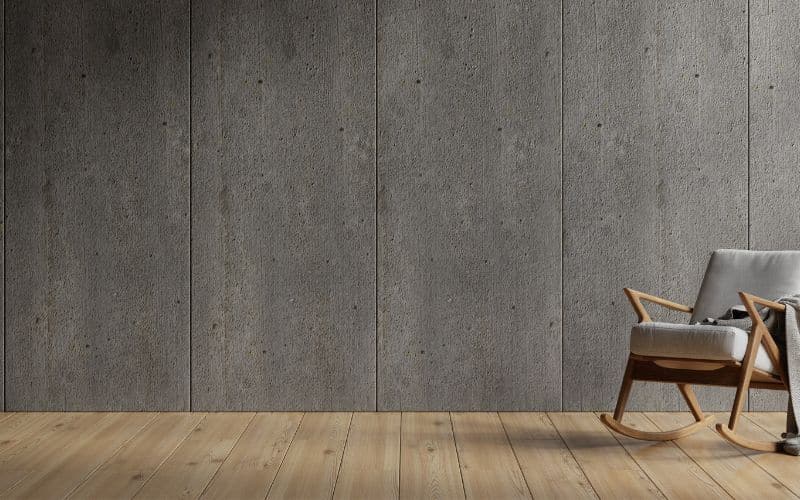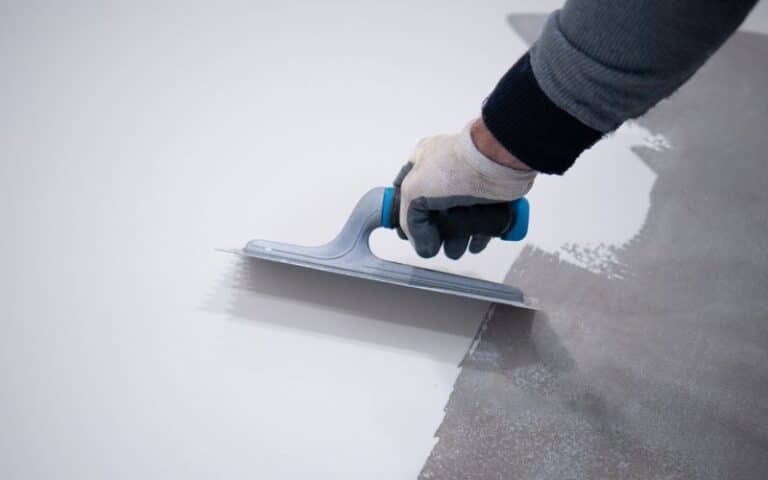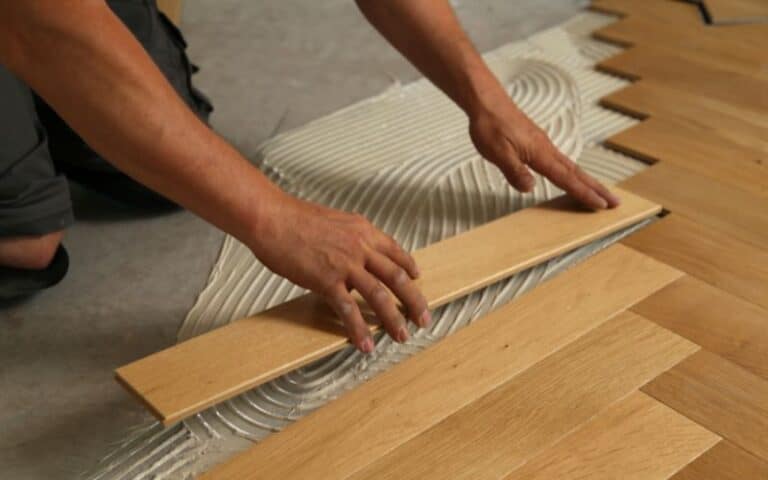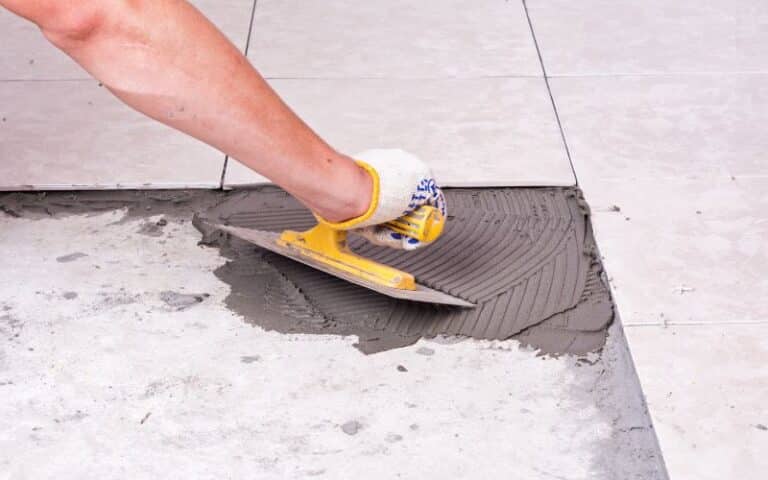A half wall is a low-height wall extending from the floor and reaching the waistline or even lower.
The name “half wall” already indicates that it doesn’t extend to the ceiling, and a lot of modern-day homeowners would opt for this.
Half walls normally visually separate the different areas inside the house to give the environment a spacious feel.
That brings us to the question, “How do you properly install a half wall on a concrete floor?”
To properly install a half wall on your concrete floor, you need to map out the position you need to place the wall. After that, get your nails and nail gun, screws and adhesives, and the hardware you need already.
In this article, we will provide you with different methods to secure your half wall to your concrete floor properly and inform you of what you should avoid in this process; please stick with us!
Ready for a Flooring Quiz?
How Do You Stabilize a Half Wall on a Concrete Floor?

Stabilizing your half wall on a concrete floor is easy to achieve once you’ve got the hang of the steps.
Below are some of the steps you should follow to achieve this properly;
#1. Prepare the Work Area
Ensure you clean the area to eliminate debris or dust; maintaining a clean surface would enhance anchoring and adhesion.
#2. Determine The Stability Needs
You should now access the structural requirement of this intended half wall. It would be best to consider Some factors like the wall’s height, weight, and purpose before work begins.
Once you’ve looked at all these factors, you can determine the appropriate stabilization method.
#3. Bonding
Boding with adhesives would be more suitable if the half wall is lightweight and doesn’t require extensive support.
You should use constructive adhesives, not just the regular ones. Apply this adhesive extensively to the bottom of the wall and firmly place the wall on the concrete floor.
For drying and curing, ensure that you follow the manufacturer’s instructions.
You should consider mechanical anchors when dealing with much heavier and load-bearing hard walls.
There are several mechanical anchors you can choose from, depending on your preference, some of which include sleeve anchors, wedge anchors, and expansion anchors.
Sometimes, factors like the weight of the wall influence the type of mechanical anchor you should use.
To lay these anchors down, drill holes in the predetermined locations and insert these anchors tightly and fasten the wall.
#4. Reinforcement
Consider reinforcement if you still need additional stability after placing these walls on the concrete floor.
To do this, you should attach a metal bracket between the floor and the bottom of the half wall.
This reinforcement would provide extra support to the wall on the floor and aid in the even distribution of load.
Before stabilizing your half wall on your concrete floor, ensure you have safety devices like gloves and goggles to protect your hands and eyes.
If you cannot achieve this independently, please ensure you call for professional assistance.
What Is the Best Way to Secure a Half Wall to The Concrete Floor
There are several amazing ways you can secure your half wall to the concrete floor; some amazing ways you can achieve this are listed below;
#1. Lag Shields
Lag shields ensure that your walls are held strongly in place, but it is usually more time-consuming to lay out than other layout methods.
First, you need to mark appropriate areas on the floor wood and drill holes into this wood sole plate with the wood bit.
Now drill holes in the concrete floors and suck out the dust, and your surfaces are ready.
After that, tap the shield into its place and replace both the sole plates and drive lag screws with the washers into the shields.
#2. Drop-In Anchors
Several drop-in anchor styles are most suitable for attaching a half wall into or onto a floor.
The sleeve anchor is a very good drop-in anchor style; you can easily install it by drilling identical holes in the concrete and sole plates.
You eventually pull out the bolt by tightening the hex nut and expanding the slotted metal sleeve within the hole.
#3. Masonry Screws
Masonry screws are another fast and effective way of tightening your half walls to the concrete floor.
When getting the screws, you must also get a bit that makes the plot hole match the fastener.
After drilling as deep as the embedded faster into the concrete floor, ensure that you drill an additional ¼ inch in to ensure the longevity of the stable wall.
#4. Hardened Concrete Nails
These nails are most suitable when the concrete floors are less than a year old. There are various types of concrete nails you can use for this.
There are concrete nails with a cut nail design with a thick and flat tank and tapering V profile and concrete nails with thick shank and spiral ridges.
Whichever you can get is still very okay. Ensure you have safety goggles and gloves when hammering these nails into the concrete floor.
If installed properly, these nails can hold down your half wall to the concrete floor for a long time.
#5. Drills With Different Bits
For drilling concrete, a carbide-tipped bit is the most suitable. The downside of this method is that they drill poorly through the wood.
You would need to drill holes in the sole plate with the ordinary wood bit to use this bit and then tip the wall into place.
How Do You Anchor a Half Wall Already Attached to a Concrete Floor?
Anchoring a half wall already attached to a concrete floor is not so difficult to do; all you have to do is ensure that you follow the steps that I will be providing you with below;
#1. Know the Anchor Type to Use
Before knowing the right anchor type to use, you should consider the weight of the wall and the amount of load the wall will carry.
Some common half-wall anchors include the wedge anchor, the sleeve anchors, and the concrete screws.
#2. Get Your Tools Ready
After knowing the right anchor to use, the next step is to prepare the materials and tools.
For this work, you need a masonry bit suitable for the anchor type you would use, a hammer, a wrench, and a vacuum or brush to clean the holes.
After getting your tools ready, you should clean up your work environment to ensure that things move smoothly; this includes removing any obstructions or existing hardware on the walls.
#3. Mark Out the Anchor Location
After the place and tools are set, you need to mark out the locations where you will place the anchors beforehand.
Ensure the areas you mark align with the wall’s studs and structural support.
#4. Drill Out the Anchor Holes
Use a drill with the appropriate masonry to drill holes into the marked-out areas on the concrete.
Also, ensure that the depth of the holes you would be drilling out matches the length of the anchor you would be using.
#5. Clean the Holes and Insert the Anchors
After you have marked out your holes, you can clean the area before inserting your anchors.
Depending on the type of anchors you use, you need to hold them securely in place with a hammer but ensure that you are very careful with it.
Once these anchors have been established, you should test the stability. You can do this by slightly applying pressure on the walls and giving it a little shake to see if it moves or wobbles.
Some materials you would need to stabilize your half walls on your concrete floor as shown in the table below;
| Materials | Use |
|---|---|
| Anchors | Used to securely hold the half walls in place on the concrete floors |
| Drill | Used to create holes in the concrete floor before you attach the anchors |
| hammers | Used for holding the anchors in place on the concrete floors |
| Vacuum or brush | Used to clean the drilled holes before attaching the half walls |
| Level | Used to ensure that the half wall is placed level on the concrete floor and not lopsided |






